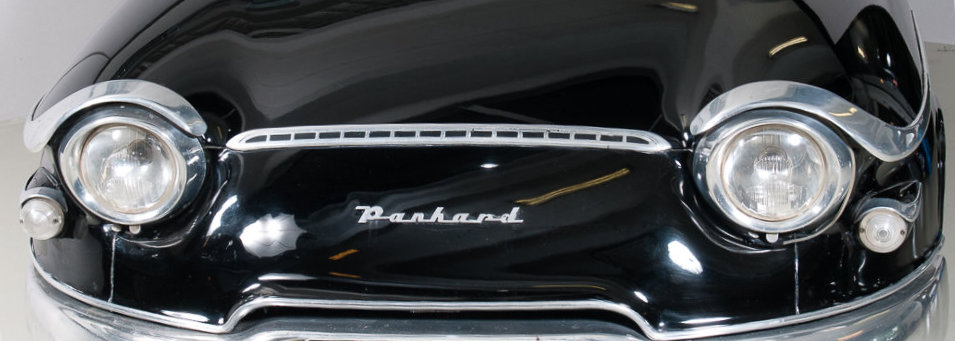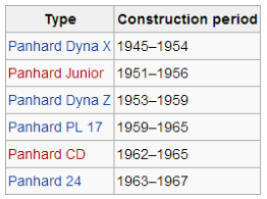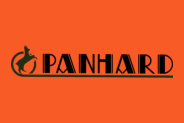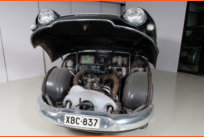



In production between 1959 to 1965

Panhard PL17 - 61
Panhard
is
a
French
manufacturer
of
light
tactical
and
military
vehicles.
Its
current
incarnation
was
formed
by
the
acquisition
of
Panhard
by
Auverland
in
2005.
Panhard
had
been
under
Citroën
ownership,
then
PSA
(after
the
1974 Peugeot Citroën merger), for 40 years.
The combined company now uses the Panhard name; this was decided based on studies indicating that the Panhard name had better brand recognition worldwide than the Auverland name. Panhard once built civilian cars but ceased production of those in 1968. Many of its military products however end up on the civilian market via third sources and as military/government surplus vehicles. Panhard also built railbuses between the wars.A glimpse of the History
Panhard was originally called Panhard et Levassor, and was established as a car manufacturing concern by René Panhard and Émile Levassor in 1887.Early Years
Panhard et Levassor sold their first automobile in 1890. based on a Daimler engine license. Levassor obtained his licence from Paris lawyer Edouard Sarazin, a friend and representative of Gottlieb Daimler's interests in France. Following Sarazin's 1887 death, Daimler commissioned Sarazin's widow Louise to carry on her late husband's agency. The Panhard et Levassor license was finalised by Louise, who married Levassor in 1890. Daimler and Levassor became fast friends, and shared improvements with one another. These first vehicles set many modern standards, but each was a one-off design. They used a clutch pedal to operate a chain-driven gearbox. The vehicle also featured a front-mounted radiator. An 1895 Panhard et Levassor is credited with the first modern transmission. For the 1894 Paris–Rouen Rally, Alfred Vacheron equipped his 4 horsepower (3.0 kW; 4.1 PS) with a steering wheel, believed to be one of the earliest employments of the principle. In 1891, the company built its first all-Levassor design, a "state of the art" model: the Systeme Panhard consisted of four wheels, a front-mounted engine with rear wheel drive, and a crude sliding-gear transmission, sold at 3500 francs. (It would remain the standard until Cadillac introduced synchromesh in 1928.) This was to become the standard layout for automobiles for most of the next century. The same year, Panhard et Levassor shared their Daimler engine license with bicycle maker Armand Peugeot, who formed his own car company. In 1895, 1,205 cc (74 cu in) Panhard et Levassors finished first and second in the Paris–Bordeaux–Paris race, one piloted solo by Levassor, for 48¾hr. Arthur Krebs succeeded Levassor as General Manager in 1897, and held the job until 1916. He turned the Panhard et Levassor Company into one of the largest and most profitable manufacturer of automobiles before World War I. Panhards won numerous races from 1895 to 1903. Panhard et Levassor developed the Panhard rod, which became used in many other types of automobiles as well. From 1910 Panhard worked to develop engines without conventional valves, using under license the sleeve valve technology that had been patented by the American Charles Yale Knight. Between 1910 and 1924 the Panhard & Levassor catalogue listed plenty of models with conventional valve engines, but these were offered alongside cars powered by sleeve valve power units. Following various detailed improvements to the sleeve valve technology by Panhard's own engineering department, from 1924 till 1940 all Panhard cars used sleeve valve engines.
1961
Engine 851 cc 2 cylinders Power 42 HP Top Speed 130 km/h Lenght 4,57 m Widht 1,67 m Weight 805 kg The collections Panhard is in mint original condition. Ready for a spin.

Photos mainly by Matti Kreivilä. Historical facts and technical details of the vehicles provided by Wikipedia. Movies YouTube.


- Decade of 60's
- Austin 850 Pickup - 1962
- Chaika Tshaika 13 GAZ - 1962
- Citroen 2CV - 1961
- DKW Junior - 1961
- Fiat 1100 - 1963
- Ford Taunus 12M - 1961
- GLAS 1204 - 1963
- MG 1100 - 1964
- Moskvich 407 - 1961
- Nagetusch caravan - 1961
- NSU Printz 4 - 1961
- Opel Kadett A - 1964
- Panhard PL17 - 1961
- Peugeot 404 - 1962
- Renault Dauphine - 1965
- Simca Aronde P60 - 1960
- Simca 1000 - 1966















